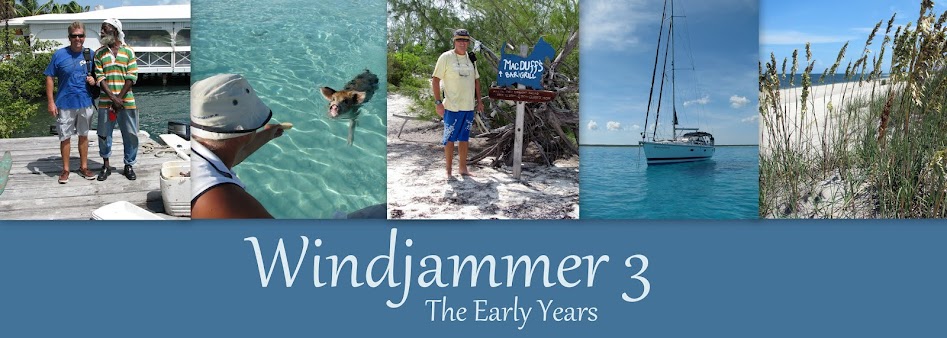Here we are on lower Chesapeake. It’s not until you see it that you realise the extent of this waterway and begin to understand its diversity. Chesapeake Bay is about 200 miles long, stretches an average of 20 miles wide and its muddy waters are about 20 feet deep. These shallow and protected waters offer more than 4000 miles of coastline and feed from several major rivers.
 |
| Warner's book is a must read if you want to really know what makes the Chesapeake tick |
The basin was created some 35 million years ago by a mega-meteorite (7th June just after lunch), according to local sailing mag, “SpinSheet” . See, sailors do still spin yarns!!. In truth, deep natural channels are actually remains of an ancient Susquehanna River, fed in prehistoric times by glaciers to the north. Unbelievably, it still flows deep below the Bay’s tepid waters – a drowned river.
 |
| Step 1: Cut off face, gills and tail flap |
Last October, if you recall, we had the good fortune to attend a crab cracking. Dozens of steamed hard shells, liberally sprinkled with “Old Bay” seasoning were thickly spread across plastic covered tables. We wasted no time in using mallets and meat pickers to get at that delicious, sweet flesh. This year, we arrived in time to sample soft shells. GS decided, on advice from the ladies at J&W Seafoods, to go it alone. Soft shells have moulted and are mostly small to really small. The whole crab is dusted with seasoning mix and deep fried. We chomped and chewed our way through 3 crabs each, claws and all. We both agreed that you have to try most things at least once.
A lot of the hard shell crab catch seems to be “picked” so this saves us a nasty job of shelling. Meat is graded, packaged and sent to market. Some is used to make crab cakes, a local speciality. We’ve sampled jumbo lump crab cakes (delicious) as part of a “top shelf” sampling of locally caught seafood.
Seafood on the whole is served battered and deep fried or covered in pungent sauces/spices. Locals consume seafood at arster (oyster) roasts; clam bakes and in raw bars. Another favourite, although I think it originates further south, is a low country boil – a messy mix of seafood, meats and vegetables steamed in beer and spices eaten right off the table.
Meanwhile, I’ve been reading William Warner’s “Beautiful Swimmers”. Written in 1976, it's a tribute to Chesapeake’s favourite blue crabs and provides an insight into the lives of hardworking watermen who catch them. It seems we, the recreational crabbing set, are known as “chicken neckers” after our favourite crab bait, and are the scourge of watermen up and down the bay. I don’t think they have a lot to worry about just yet – we’re still up on the hard!!









